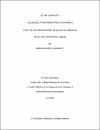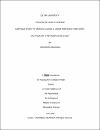The Use of β-Blockers and the Risk of Undergoing a Knee Arthroplasty : A Nested Case-Control Study
| المؤلف | Tamimi, Iskandar |
| المؤلف | García-Meléndez, Gaspar |
| المؤلف | Vieitez-Riestra, Ignacio |
| المؤلف | Palacios-Penedo, Sergio |
| المؤلف | Garceso, Diego Moriel |
| المؤلف | Sanchez, Alejandro |
| المؤلف | Tamimi, Faleh |
| المؤلف | Guerado, Enrique |
| المؤلف | Milner, Marc Stefan Dawid |
| المؤلف | de Quevedo, David Garcia |
| المؤلف | Gonzalez-Quevedo, David |
| تاريخ الإتاحة | 2024-03-13T05:14:57Z |
| تاريخ النشر | 2023 |
| اسم المنشور | Journal of Bone and Joint Surgery |
| المصدر | Scopus |
| الرقم المعياري الدولي للكتاب | 219355 |
| الملخص | Background: Research has indicated that β-blockers may downregulate various inflammatory mediators that are involved in osteoarthritis (OA). The objective of this study was to analyze the likelihood of total knee arthroplasty (TKA) among patients with OA who were being treated with β-blockers. Methods: A nested case-control study was conducted with use of clinical records from our institutional database. We included patients who attended our outpatient clinic with a history of new-onset knee pain between 2010 and 2019. The case group included individuals who had undergone primary TKA between 2018 and 2019, whereas the control group included subjects who had not undergone TKA. Controls were matched by date of birth ±2 years, sex, calendar time (first outpatient visit ±1 year), and the grade of arthritis; the control-to-case ratio was 1:1. Adherence to β-blocker use was measured with use of the proportion of days covered (PDC) (i.e.,<0.25, ≥0.25 to <0.75, ≥0.75), and the cumulative effect was measured on the basis of the total number of years of treatment with β-blockers. A binary logistic regression analysis adjusted to potential confounders was carried out to assess the risk of TKA associated with the intake of β-blockers. Results: A total of 600 patients were included (300 in the case group and 300 in the control group). Compared with non-users, any use of β-blockers during the follow-up period was associated with a reduction in the likelihood of undergoing TKA (adjusted odds ratio [OR], 0.51; 95% confidence interval [CI], 0.34-0.77). The adjusted ORs for the use of selective β1-blockers and nonselective β1-blockers were 0.69 (95% CI, 0.36 to 1.31) and 0.42 (95% CI, 0.24 to 0.70), respectively. The adjusted ORs for any recent use, PDC of <0.25, PDC of ≥0.25 to <0.75, and PDC of ≥0.75 were 0.65 (95% CI, 0.51 to 0.99), 0.62 (95% CI, 0.21 to 1.85), 0.32 (95% CI, 0.09 to 1.22), and 0.55 (95% CI, 0.34 to 0.88), respectively. Regarding the cumulative effect of β-blockers, the adjusted ORs for the use for <1 year, ≥1 to <5 years, and ≥5 years were 0.41 (95% CI, 0.20 to 0.85), 0.52 (95% CI, 0.21 to 1.33), and 0.36 (95% CI, 0.22 to 0.60), respectively. Conclusions: The use of nonselective β-blockers was associated with a lower likelihood of undergoing TKA. Patients treated for prolonged periods were at a lower likelihood for undergoing TKA. |
| اللغة | en |
| الناشر | Lippincott Williams and Wilkins |
| الموضوع | angiotensin receptor antagonist beta 1 adrenergic receptor blocking agent beta adrenergic receptor blocking agent calcium channel blocking agent dipyrone nonsteroid antiinflammatory agent opiate paracetamol aged anterior cruciate ligament Article body mass case control study chronic obstructive lung disease controlled study daily life activity female glaucoma heart arrhythmia heart failure human hypertension ischemic heart disease Kellgren-Lawrence grade knee arthroplasty knee function knee radiography major clinical study male osteoarthritis patient compliance risk factor knee knee osteoarthritis knee replacement pain Arthroplasty, Replacement, Knee Case-Control Studies Humans Knee Joint Osteoarthritis, Knee Pain |
| النوع | Article |
| الصفحات | 1494-1501 |
| رقم العدد | 19 |
| رقم المجلد | 105 |
الملفات في هذه التسجيلة
| الملفات | الحجم | الصيغة | العرض |
|---|---|---|---|
|
لا توجد ملفات لها صلة بهذه التسجيلة. |
|||
هذه التسجيلة تظهر في المجموعات التالية
-
أبحاث طب الأسنان [270 items ]



